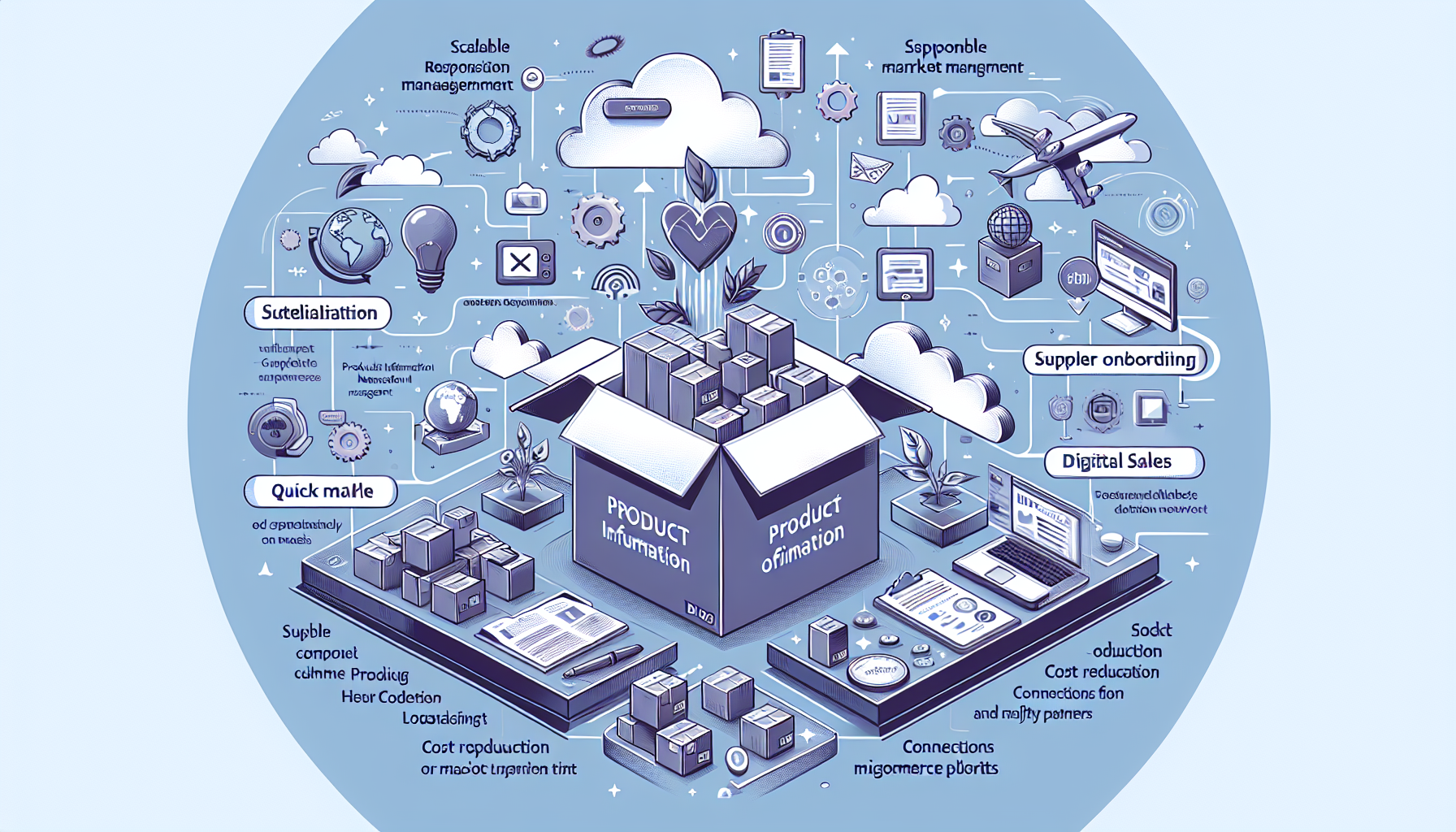Imagine you’re a retailer with thousands of products listed across multiple online channels. Each product needs accurate descriptions, prices, and stock details updated in real-time. If this data isn’t managed properly, it can lead to a host of issues like lost sales, dissatisfied customers, and tarnished brand reputation. This scenario highlights a significant challenge: effective product information management (PIM).
In this article, you’ll learn how a robust PIM system can be the backbone of successful multi-channel marketing. We’ll explore the ways well-organized product data can boost your business operations and improve customer satisfaction. By the end, you’ll see the value of investing in a good PIM system, not just to survive, but to thrive in the competitive digital marketplace.
Understanding Product Information Management
Product Information Management involves collecting, managing, and sharing product data across various sales and marketing platforms. A good PIM system ensures that all product information is up-to-date, consistent, and easily accessible. This streamlined process is crucial for businesses looking to expand their reach across different online and offline channels.
Furthermore, PIM is not just about organizing product catalogs. It’s also about enriching product pages with high-quality images, detailed descriptions, and engaging multimedia, all of which help in enhancing the customer experience. Essentially, a PIM system acts as a centralized hub for all your product information, making it easier to manage and dispense this information across your marketing and sales channels.
Why Your Business Needs a PIM System
Let’s consider a fictional scenario: John owns a small yet flourishing online store selling sports equipment. He notices that mismanaged product data, leading to inconsistent information across platforms, often confuses potential customers. John’s dilemma is common in the retail industry, where managing vast amounts of product data manually can be overwhelming and fraught with error.
Integrating a PIM system can dramatically streamline John’s operational workflows by ensuring that all product information is centrally located and synchronized. This not only reduces the likelihood of errors but also leaves more time for John and his team to focus on other critical aspects of the business, like customer service and strategic planning. This example illustrates just how transformative a well-deployed PIM system can be for a business, irrespective of its size.
Key Benefits of Effective Product Information Management
Implementing a PIM system offers multiple advantages:
- Enhanced Customer Experience: Consistent, accurate product information helps in building trust with your customers. It ensures they find what they’re looking for quickly and receive what they expect when making a purchase.
- Increase in Sales: Well-managed product listings are easily searchable and more appealing to potential buyers. This can lead to better visibility and more conversions.
- Improved Efficiency: A PIM system automates many routine tasks, allowing your team to avoid the tedious work of manual data entry and updates.
Moreover, the strategic integration of a PIM system supports real-time data updates across all channels, which is indispensable in today’s fast-paced market environments.
Choosing the Right PIM Solution
Deciding on the right PIM system depends on a variety of factors such as the size of your business, the complexity of your product lines, and the channels you use. It’s important to select a PIM that not only integrates seamlessly with your existing workflows but also has the capacity to scale as your business grows.
Remember, the goal is to find a PIM solution that aligns with your business objectives and enhances your operational capabilities.
Conclusion: Empower Your Business with Effective PIM
Enhancing your product information management process is not just about technology, it’s about transforming the way your business operates and engages with customers. An efficient PIM system is pivotal in ensuring your product data works for you, aiding in better customer interactions, smoother operations, and ultimately more robust sales performance.
If you’re keen to learn more about the transformative power of a good PIM system or discuss your product data challenges, explore the knowledge base on PIMvendors.com or schedule a call to dive deeper into how PIM can tailor to your specific business needs.


